![]()
Fifty-eight “lighthouse” schools have been put up in Region 4A by the International Institute for Rural Reconstruction (IIRR) which teaches K-12 pupils gardening as a reliable solution to malnutrition that can be prevalent among schoolchildren.
![]()
The IIRR has proven that the lighthouse schools in its Gardening and Nutrition Education with School-based Supplementary Feeding (GARNESUPP) is a viable way to source food right from one’s garden.
It made these gardens the source of food for its feeding program for children in public schools in Region 4A or CALABARZON (Cavite, Laguna, Batangas, Rizal, Quezon).
Likewise, the gardens enlighten pupils and parents on nutrition education.
The program takes inspiration from Cornell University’s International Nutrition program. It uses nutrition education among children or parents as tool in mitigating malnutrition.
“Improved nutrition education has been one of the key factors to prevent 12,000 deaths a year worldwide,” according to the United Nations Millennium Campaign.
When one looks at the list of vegetables that IIRR teaches the schoolchildren to plant, he may doubt whether this battle for capturing pupils’ mind for agriculture can be won.
![]()
The vegetables are amaranth (kulitis), long-fruited jute (saluyot), Philippine spinach (talinum), horseradish (malunggay), rice bean (tapilan), cowpea (paayap), lima bean (patani), hyacinth bean (batao), ash/white gourd (kundol), pigeonpea (kadios), wiged bean (sigarilyas), and okra.
Thanks to IIRR farm experts as Dr. Julian Gonsalves, senior program advisor.
“We’re interested in influencing their thinking. We have a very powerful device to influence young people on basic environmental natural resource concepts. By growing indigenous vegetables through Bio-intensive gardening (BIG), you’re actually conserving our indigenous varieties for future use,” said Gonsalves.
Nourishment
![]()
The apparently more important role of this GARNESSUP lighthouse schools is the nourishment of children in public schools.
An IIRR study showed that “school-based supplementary feeding using produce from school gardens effectively improved nutritional status and reduced anemia rates.”
It noted a significant decrease in anemia prevalence from 20.8% to 4.2% in a group of children with feeding program using iron fortified rice compared to the children with ordinary rice and those that never had a feeding program at all.
Moreover, savings from the use of indigenous vegetables from school gardens in 6 months reached P8,851 and benefited 146 schoolchildren.
Schools studied were the Felipe Calderon Elem. School in Tanza, Cavite and the Gen. Aloha Elem School in Gen. Trias, Cavite.
The study was conducted with the Department of Science and Technology-Food and Nutrition Research Institute (DOST-FNRI), International Development Research Centre, and the Department of Education.
DOST-FNRI noted in its National Nutrition Survey that 3.35 million children aged 4 and below were found undernourished under the MDG Philippine Progress Report 2010.
In 2013, a DOST-FNRI survey showed the number of underweight children age 5-10 years totalled 29%, children with stunting (low height for age), 29.9%, and those affected by wasting (low weight for height), 8.6%.
“These statistics are alarming and are very more disturbing when viewed at the household level,” said the IIRR.
BIG
BIG is a cost-saving, viable farming system for any poor community since it practically uses no expensive chemical fertilizer inputs, according to Emilita Monville Oro, IIRR country director.
The plots are dug deep—a foot deep– to allow root system of plants to reach nutrients and moisture under the soil. It makes room for water to be trapped under the soil --useful in both drought and flooding.
It conserves water. Deep dug beds loosen the soil and allow organic matter to thrive along with earthworms and beneficial bacteria.
“This is a living soil and gets better every year provided you don’t let it dry up and compact again in summer,” according to an IIRR primer.
Planting legumes (cowpea, rice bean) in deep dug plots keeps microbes alive, soil temperature low. It prevents weed growth.
In BIG, Kakawate trees are planted around the garden as perimeter wall and wind-breakers.
“Leaves of these nitrogen fixing trees (Kakawate) serve as source of green fertilizer. If trees are not planted on all four sides of the plot, we don’t have their cooling effects. The wind tends to dry the soil,” said IIRR.
Green leaves are used as fertilizer for the plots—enabling carbon storage unlike chemical fertilizers that contribute to greenhouse gas emission.
It relies on natural fertilizers such as decomposing stems and leaves from leftover harvested plants. The produce is rendered safe and free from pesticide residues.
Crop Museum
The GARNESUPP lighthouses perform another food security function – as crop museums.
“We are rapidly losing this agrobiodiversity because once lost, we can never regain these important heritage varieties. Crop museums serve as living gene banks,” said Oro.
The crop museum enhances intra-species diversity, such as in having different kinds of sweet potato. This reduces risks from crop failure that becomes more frequent in climate change due to rising temperature that causes increase in pest and diseases.
Most of these indigenous vegetables such as patani and bataw are drought tolerant. These are not bought from seed companies; planting them is the best way to conserve them.
When these are lost, it is the poor who spends 50% of their earnings for food alone, who suffer the most. They resort to cheaper but less nutritious crops.
Crop museums are relished for their educational worth— a showcase of nutritionaly relevant and climate hardy plant species—trees, shrubs, root and tuber crops, vines, and short-season annual crops.
These are nurseries -- source of planting materials. Mother plants are preserved there.
“School gardens are a repository for our vanishing genetic resources heritage the same way as a museum helps conserve valuable artifacts.”
Crop museums of IIRR require at least 200 square meters, should receive at least 6 hours of sunlight with good water and drainage system. Accession numbers are provided by the supervising teacher for plant entries.
Propagation using cuttings are done in the museum. Only seeds from healthy plants are harvested and distributed. Seeds should be dried properly for 3-4 hours in 4-5 days, avoiding midday scorching heat as extreme heat can kill the seed.
Crop museums are also responsible to train teachers.
Seed exchanges are facilitated between schools and other institutions in order to store and preserve more plant species.
Recipes
The GARNESSUP lighthouse gardens are used too as tool for teaching culinary arts and Filipino food and crop culture.
GARNESSUP is from planting to feeding. It has developed recipes relished by many – kids and adults, CALABARZON natives or guests alike.
The recipes using these indigenous vegetables are surprisingly delicious.
The list on their menu includes Maca-kulitis soup, Spaghetting with malunggabi balls, Ginatan kadyos, Monggo Congee, Kamote Buchi Surprise, Kamote Palitaw, Monggo BananaBalls, Kadpilan arroz caldo con, Arroz lamang ugat con kulitis, Tahong with cassava and malunggay, Misua, patola, and kulitis, squash siomai, Muskadsilog, andGisadong Talinum at Galunggong.
With its success in raising public schoolchildren’s nutritional status, IIRR recommends the following:
· Nutrition education among children can be delivered through the classroom teaching approach; however, this should be conducted in an intensive and attractive manner in order to capture the interest of children.
· The quality of teaching efforts needs to be improved via training support if this delivery model is to be scaled-up.
· The regular conduct of nutrition education among parents during PTA (Parent Teacher Association) meetings and other appropriate opportunities should be given due attention. Parents play a significant role in the improvement of the children’s nutritional status. (Growth Publishing for IIRR)

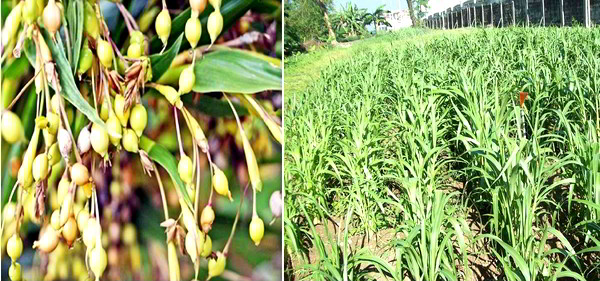 While a lot of research and development efforts on adlay have already been accomplished and produced promising results in terms of production and processing, information on regional market has not yet been established. With this, the Bureau of Agricultural Research (BAR) commissioned the University of Asia and the Pacific (UA&P) to lead the market research on adlay. A private research university in the country, the UA&P is known for having the technical expertise in conducting market research endeavors.The study aims to come up with a marketing plan for adlay products based on the market research of households and retailers/distributors in the selected sample areas. Such areas include major adlay-producing regions including 2, 4A, 9, and 10 and not-so-familiar areas to adlay including NCR and Region 7. The marketing plan will serve as a guiding tool in pursuing possible commercialization of adlay.According to the UA&P, a comprehensive analysis of adlay’s marketing environment is important in determining its acceptability in the market. Moreover, it will aid in designing appropriate product development and introduction strategies that will help in realizing marketing-related goals of the Adlay R&D Program.As far as benefits are concerned, this initiative will pave for the crafting of further research plans for the development of adlay as food staple and processed food product in support to the Food Staples Sufficiency Program of the Department of Agriculture. Furthermore, it will encourage farmers to improve their productivity and income by venturing into value-added processing.On 27-30 April 2015, a team composed of adlay focals from concerned divisions of BAR and DA-Cagayan Valley Research Center joined the UA&P to observe the fieldwork on product test and price sensitivity among selected households in Dupax and Bambang, Nueva Vizcaya. ### (Anne Camille B. Brion)
While a lot of research and development efforts on adlay have already been accomplished and produced promising results in terms of production and processing, information on regional market has not yet been established. With this, the Bureau of Agricultural Research (BAR) commissioned the University of Asia and the Pacific (UA&P) to lead the market research on adlay. A private research university in the country, the UA&P is known for having the technical expertise in conducting market research endeavors.The study aims to come up with a marketing plan for adlay products based on the market research of households and retailers/distributors in the selected sample areas. Such areas include major adlay-producing regions including 2, 4A, 9, and 10 and not-so-familiar areas to adlay including NCR and Region 7. The marketing plan will serve as a guiding tool in pursuing possible commercialization of adlay.According to the UA&P, a comprehensive analysis of adlay’s marketing environment is important in determining its acceptability in the market. Moreover, it will aid in designing appropriate product development and introduction strategies that will help in realizing marketing-related goals of the Adlay R&D Program.As far as benefits are concerned, this initiative will pave for the crafting of further research plans for the development of adlay as food staple and processed food product in support to the Food Staples Sufficiency Program of the Department of Agriculture. Furthermore, it will encourage farmers to improve their productivity and income by venturing into value-added processing.On 27-30 April 2015, a team composed of adlay focals from concerned divisions of BAR and DA-Cagayan Valley Research Center joined the UA&P to observe the fieldwork on product test and price sensitivity among selected households in Dupax and Bambang, Nueva Vizcaya. ### (Anne Camille B. Brion)

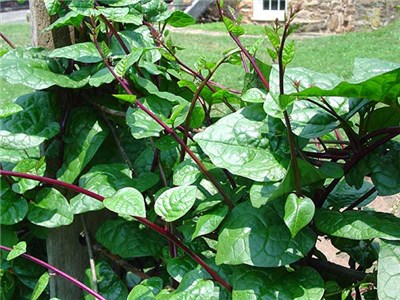 The plant is a succulent branched, smooth, twining, herbaceous vine. The stems are green or purplish. The leaves are fleshy, ovate or heart-shaped, 5-12 centimeters (cm) in length, stalked, tapering toa pointed tip and heart shape at the base. The spikes are axillary, solitary and 5-29 cm in length. The flowers are pink and about 4 millimeters (mm) long. The fruit is fleshy, stalkless, ovoid or nearly spherical, 5-6 mm in length and purple when mature.The taste is similar to spinach, however this crop is a very warm-season crop unlike standard spinach grown in the Northeastern US. This crop is native to tropical Asia, probably originating from India or Indonesia, and is extremely heat tolerant. Production trendsMalabar spinach is grown throughout the tropics as a perennial and in warmer temperate regions as an annual crop. The vegetable is sold in many local markets. It is a minor vegetable and since it is generally grouped together with other greens, no data on production or trade are available.Uses/ImportanceAlugabti is commonly grown for its young shoots which make an excellent succulent, slightly mucilaginous vegetable, used as a pot herb in stews or soups, consumed boiled, fried in oil or sometimes as green salad. Its fruits seem to have been earlier used for dyeing purposes in China. The red fruit juice can be used as ink, cosmetic and for coloring foods. The young leaves can be used as laxative, the pulped leaves to poultice sores, red fruit juice as eye drops to treat conjunctivitis and the roots as rubefacient. The red forms are commonly planted as ornamentals and are, even becoming popular in Europe as a pot plant.The plant is a rich source of soluble fiber, which helps digestion. It is rich in Saponins that act as phytochemicals, which can fight off cancer. The red variety of alugbati is a good source of xanthones, an antioxidant. Its Folic acid, which is also called folate, is one of the B vitamins that are critical for childbearing women. It helps them prevent birth defects on the neural tube, e.g., spina bifida.The cooked roots are used to treat diarrhea while cooked alugbati leaves and stems can serve as mild laxative, especially in kids and pregnant women. The decoction from the leaves is also mixed with sugar and used for catarrhal difficulty in children.Similarly, the sap is also applied to acne to prevent inflammation. It also soothes headaches. When mixed with butter, it can be applied on burns and scalds. The flowers can be used as antidote for poison while a poultice made from the roots is applied to swellings.According to other countries’ folklores, the plant is also used in treating hemorrhages and can enhance fertility in women. It is also administered to patients with sexually transmitted diseases like gonorrhea.Nutritional PropertiesThe composition of Alugbati is comparable to other dark green leafy vegetables with ahigh moisture content. The leaves contain several triterpeneoligoglycosides of the oleanane-type, including basellasaponins, betavulgaroside I, spinacoside C and momordins. Two antifungal peptides and two ribosome-inactivating proteins with antiviral activity have been isolated from the seeds.Crop typesThere are three common types of alugbati: Basellaalba with green stem and oval to almost round leaves; Basellarubra with red stem and green, oval to round leaves; and a third type which is a hybrid of the two. A stopgap variety named “Pulahan” with red stem and the green stem called “Luntian” was released in 1981 by the Institute of Plant Breeding. CultivationClimate and soil requirementsIt grows well in tropical lowlands at elevations up to 500-3,000 meters (m). It also grows in temperate regions, however growth is slow in low temperatures resulting in low yields. Flowering is induced during the short-day months of November to February. Alugbatithrives in many soils, but sandy loam soils rich in organic matter with pH ranging from 5.5 to 8.0 appears to be most suitable.Add compost or other organic matter to the soil. Alugbati grows best in soils high in organic matter. Compost also improves soil moisture retention and drainage, helping to create the moist and loamy soil that this spinach prefers. Add at least a couple of inches of compost to the surface of the soil and mix it into the native soil with a tiller. Inland soils tend to be heavier than coastal soils, so they can use up to 6 inches of compost.Land preparation and planting These are propagated by cuttings or seeds.Planting from CuttingsThe leaves are usually removed before planting to reduce water loss through aspiration. Fresh, healthy tip cuttings of about 20-25 cm lengthare the best planting materials. Soak the cuttings in water overnight or keep them in a dark and damp space for a day or two. Plant the cuttings on hills or in rows. Space small hills six to eight inches apart and put three or four cuttings on each hill. Alternatively, space rows eight to 12 inches apart, with the cuttings spaced about eight inches apart. Water the cuttings immediately and continue to keep the soil moist.Planting from SeedScarify (to make tiny punctures or superficial incisions) the seeds by using sandpaper or a knife to cut the outer seed coat. Plant the seeds directly outside after soil temperatures have warmed to the minimum temperature required for germination of 18.33 °C. Plant them about 1/4 inch deep in rows spaced about eight inches apart. Alternatively, spread seeds all across the soil and then thin the seedlings later so that they are spaced about eight inches apart. Keep the soil consistently moist. If the soil dries out, the plants can flower, which makes the leaves taste bitter.In home gardens, alugbati is usually grown on slanting or horizontal trellises. For commercial production, densities of about 50,000 plants/hectare are recommended.FertilizationAlugbati can grow even under conditions of moderate soil fertility, but production is increased with the application of fertilizers. Soil test is highly recommended to determine available N, P and K. The fertilizer requirement calculated based on the target yield. Apply compost or manure at 3-5 tons/ha during plot preparation and sidedress once a month with manure or compost at 20-30 bags/ha. Tea manure and fermented plant juice (FPJ) may also be used to improve soil fertility.To prepare tea manure, soak ¾ sack of dried cow or horse manure in a ¾ plastic drum (200 L capacity) of water. Soak for 5 – 7 days with frequent stirring. To prepare the FPJ, mix three parts chopped plant shoots or banana trunk with 1 part raw sugar or molasses. Ferment mixture for 5 -7 days. Dilute 1 part tea manure or FPJ to 20 parts water and drench on the plots or use as foliar fertilizer.TrellisingIn commercial production, grow alugbati without trellis while in home or backyard gardens, provide trellis to maximize space.IrrigationAlugbati requires plenty of water for optimum growth. During dry season use furrow irrigation at 5-7 days interval or sprinkler irrigation daily to develop a deep healthy root system, use of mulch to conserve soil moisture like grass clippings or rice straw. For wet season need to provide canals to facilitate quick drainage of excess water after heavy rains. Avoid over irrigation to prevent foliar diseases development and leaching of soil nutrients. Weed ManagementAt early stage of the plants weed control is necessary to give alugbati a head start. Thorough land preparation and mulching such as grass clippings and rice straw can help to control the growth of weeds. Spot weeding or hoe weeding can be done also as needed. Crop ProtectionAlugbati is generally tolerant to pests and diseases due to its very thick leaf cuticle, which make it easy to grow organically. However, it serves as a host to a number of insect pests such as leafminers and cutworms that can be managedby regular harvesting. Leaf spots caused by Cercosporaand Acrotheciumsometimes occur. Alugbati is very susceptible to root-knot nematodes but it can be minimized by crop rotation with corn and planting of marigold. Harvesting Alugbati is ready for harvest at 30-45 days after planting. Plants harvested either once or repeatedly by priming. In once-over harvest, cut the stems or shoots close to the ground or uproot the entire plant (if grown from seeds), then wash and tie in bundles. For multiple harvests, pick or cut the shoots at about 15-25 cm long or at a frequency of weekly intervals. Harvesting is done late in the afternoon to reduce water loss and keep the produce in cool, shaded place. Post-harvest HandlingThis plant easily wilts after harvest. A common market practice is to sprinkle the bundles with water or to wrap them in banana leaves to retain freshness. If harvested with the roots intact, keep the bundles fresh for up to 7 days by letting them stand in a basin filled with water. For home consumption, pack alugbati in a styrofore boxes then store in the refrigerator to keep them fresh for up to 14 days.By:Julie Ann A. Aragones
Department of Agriculture
Bureau of Plant IndustryReferences Backyard Gardening Technoguide. Philippine Council for Agriculture, Forestry and Natural Resources Research and development Center (PCARRD) 69p.
DA-NAFC Sub-Committee on Fruits and Vegetables. Booklet on Indigenous Vegetables. 52p
http://database.prota.org/dbtw-wpd/exec/dbtwpub.dll?AC=QBE_ QUERY&BU=http%3A%2F%2Fdatabase.prota.org%2Fsearch.htm&TN=PROTAB~1&QB0=AND&QF0=Species+Code&QI0=Basella+alba&RF=Webdisplay
http://homeguides.sfgate.com/plant-alugbati-23791.html
http://www.all-about-philippine-fruits-and-herbs.com/alugbati-medicinal-uses.html
https://www.google.com.ph/search?q=Cercospora+leaf+spot&client=firefox-a&hs=Gsr&rls=org.mozilla:en-US:official&source=lnms &tbm=isch&sa=X&ei=p2uEUsOFIYWdiAeHroHgCg&ved=0CAkQ_AUoAQ&biw=1600&bih=797
http://www.wordreference.com/definition/scarify
http://www.worldcrops.org/crops/Malabar-Spinach.cfm
The plant is a succulent branched, smooth, twining, herbaceous vine. The stems are green or purplish. The leaves are fleshy, ovate or heart-shaped, 5-12 centimeters (cm) in length, stalked, tapering toa pointed tip and heart shape at the base. The spikes are axillary, solitary and 5-29 cm in length. The flowers are pink and about 4 millimeters (mm) long. The fruit is fleshy, stalkless, ovoid or nearly spherical, 5-6 mm in length and purple when mature.The taste is similar to spinach, however this crop is a very warm-season crop unlike standard spinach grown in the Northeastern US. This crop is native to tropical Asia, probably originating from India or Indonesia, and is extremely heat tolerant. Production trendsMalabar spinach is grown throughout the tropics as a perennial and in warmer temperate regions as an annual crop. The vegetable is sold in many local markets. It is a minor vegetable and since it is generally grouped together with other greens, no data on production or trade are available.Uses/ImportanceAlugabti is commonly grown for its young shoots which make an excellent succulent, slightly mucilaginous vegetable, used as a pot herb in stews or soups, consumed boiled, fried in oil or sometimes as green salad. Its fruits seem to have been earlier used for dyeing purposes in China. The red fruit juice can be used as ink, cosmetic and for coloring foods. The young leaves can be used as laxative, the pulped leaves to poultice sores, red fruit juice as eye drops to treat conjunctivitis and the roots as rubefacient. The red forms are commonly planted as ornamentals and are, even becoming popular in Europe as a pot plant.The plant is a rich source of soluble fiber, which helps digestion. It is rich in Saponins that act as phytochemicals, which can fight off cancer. The red variety of alugbati is a good source of xanthones, an antioxidant. Its Folic acid, which is also called folate, is one of the B vitamins that are critical for childbearing women. It helps them prevent birth defects on the neural tube, e.g., spina bifida.The cooked roots are used to treat diarrhea while cooked alugbati leaves and stems can serve as mild laxative, especially in kids and pregnant women. The decoction from the leaves is also mixed with sugar and used for catarrhal difficulty in children.Similarly, the sap is also applied to acne to prevent inflammation. It also soothes headaches. When mixed with butter, it can be applied on burns and scalds. The flowers can be used as antidote for poison while a poultice made from the roots is applied to swellings.According to other countries’ folklores, the plant is also used in treating hemorrhages and can enhance fertility in women. It is also administered to patients with sexually transmitted diseases like gonorrhea.Nutritional PropertiesThe composition of Alugbati is comparable to other dark green leafy vegetables with ahigh moisture content. The leaves contain several triterpeneoligoglycosides of the oleanane-type, including basellasaponins, betavulgaroside I, spinacoside C and momordins. Two antifungal peptides and two ribosome-inactivating proteins with antiviral activity have been isolated from the seeds.Crop typesThere are three common types of alugbati: Basellaalba with green stem and oval to almost round leaves; Basellarubra with red stem and green, oval to round leaves; and a third type which is a hybrid of the two. A stopgap variety named “Pulahan” with red stem and the green stem called “Luntian” was released in 1981 by the Institute of Plant Breeding. CultivationClimate and soil requirementsIt grows well in tropical lowlands at elevations up to 500-3,000 meters (m). It also grows in temperate regions, however growth is slow in low temperatures resulting in low yields. Flowering is induced during the short-day months of November to February. Alugbatithrives in many soils, but sandy loam soils rich in organic matter with pH ranging from 5.5 to 8.0 appears to be most suitable.Add compost or other organic matter to the soil. Alugbati grows best in soils high in organic matter. Compost also improves soil moisture retention and drainage, helping to create the moist and loamy soil that this spinach prefers. Add at least a couple of inches of compost to the surface of the soil and mix it into the native soil with a tiller. Inland soils tend to be heavier than coastal soils, so they can use up to 6 inches of compost.Land preparation and planting These are propagated by cuttings or seeds.Planting from CuttingsThe leaves are usually removed before planting to reduce water loss through aspiration. Fresh, healthy tip cuttings of about 20-25 cm lengthare the best planting materials. Soak the cuttings in water overnight or keep them in a dark and damp space for a day or two. Plant the cuttings on hills or in rows. Space small hills six to eight inches apart and put three or four cuttings on each hill. Alternatively, space rows eight to 12 inches apart, with the cuttings spaced about eight inches apart. Water the cuttings immediately and continue to keep the soil moist.Planting from SeedScarify (to make tiny punctures or superficial incisions) the seeds by using sandpaper or a knife to cut the outer seed coat. Plant the seeds directly outside after soil temperatures have warmed to the minimum temperature required for germination of 18.33 °C. Plant them about 1/4 inch deep in rows spaced about eight inches apart. Alternatively, spread seeds all across the soil and then thin the seedlings later so that they are spaced about eight inches apart. Keep the soil consistently moist. If the soil dries out, the plants can flower, which makes the leaves taste bitter.In home gardens, alugbati is usually grown on slanting or horizontal trellises. For commercial production, densities of about 50,000 plants/hectare are recommended.FertilizationAlugbati can grow even under conditions of moderate soil fertility, but production is increased with the application of fertilizers. Soil test is highly recommended to determine available N, P and K. The fertilizer requirement calculated based on the target yield. Apply compost or manure at 3-5 tons/ha during plot preparation and sidedress once a month with manure or compost at 20-30 bags/ha. Tea manure and fermented plant juice (FPJ) may also be used to improve soil fertility.To prepare tea manure, soak ¾ sack of dried cow or horse manure in a ¾ plastic drum (200 L capacity) of water. Soak for 5 – 7 days with frequent stirring. To prepare the FPJ, mix three parts chopped plant shoots or banana trunk with 1 part raw sugar or molasses. Ferment mixture for 5 -7 days. Dilute 1 part tea manure or FPJ to 20 parts water and drench on the plots or use as foliar fertilizer.TrellisingIn commercial production, grow alugbati without trellis while in home or backyard gardens, provide trellis to maximize space.IrrigationAlugbati requires plenty of water for optimum growth. During dry season use furrow irrigation at 5-7 days interval or sprinkler irrigation daily to develop a deep healthy root system, use of mulch to conserve soil moisture like grass clippings or rice straw. For wet season need to provide canals to facilitate quick drainage of excess water after heavy rains. Avoid over irrigation to prevent foliar diseases development and leaching of soil nutrients. Weed ManagementAt early stage of the plants weed control is necessary to give alugbati a head start. Thorough land preparation and mulching such as grass clippings and rice straw can help to control the growth of weeds. Spot weeding or hoe weeding can be done also as needed. Crop ProtectionAlugbati is generally tolerant to pests and diseases due to its very thick leaf cuticle, which make it easy to grow organically. However, it serves as a host to a number of insect pests such as leafminers and cutworms that can be managedby regular harvesting. Leaf spots caused by Cercosporaand Acrotheciumsometimes occur. Alugbati is very susceptible to root-knot nematodes but it can be minimized by crop rotation with corn and planting of marigold. Harvesting Alugbati is ready for harvest at 30-45 days after planting. Plants harvested either once or repeatedly by priming. In once-over harvest, cut the stems or shoots close to the ground or uproot the entire plant (if grown from seeds), then wash and tie in bundles. For multiple harvests, pick or cut the shoots at about 15-25 cm long or at a frequency of weekly intervals. Harvesting is done late in the afternoon to reduce water loss and keep the produce in cool, shaded place. Post-harvest HandlingThis plant easily wilts after harvest. A common market practice is to sprinkle the bundles with water or to wrap them in banana leaves to retain freshness. If harvested with the roots intact, keep the bundles fresh for up to 7 days by letting them stand in a basin filled with water. For home consumption, pack alugbati in a styrofore boxes then store in the refrigerator to keep them fresh for up to 14 days.By:Julie Ann A. Aragones
Department of Agriculture
Bureau of Plant IndustryReferences Backyard Gardening Technoguide. Philippine Council for Agriculture, Forestry and Natural Resources Research and development Center (PCARRD) 69p.
DA-NAFC Sub-Committee on Fruits and Vegetables. Booklet on Indigenous Vegetables. 52p
http://database.prota.org/dbtw-wpd/exec/dbtwpub.dll?AC=QBE_ QUERY&BU=http%3A%2F%2Fdatabase.prota.org%2Fsearch.htm&TN=PROTAB~1&QB0=AND&QF0=Species+Code&QI0=Basella+alba&RF=Webdisplay
http://homeguides.sfgate.com/plant-alugbati-23791.html
http://www.all-about-philippine-fruits-and-herbs.com/alugbati-medicinal-uses.html
https://www.google.com.ph/search?q=Cercospora+leaf+spot&client=firefox-a&hs=Gsr&rls=org.mozilla:en-US:official&source=lnms &tbm=isch&sa=X&ei=p2uEUsOFIYWdiAeHroHgCg&ved=0CAkQ_AUoAQ&biw=1600&bih=797
http://www.wordreference.com/definition/scarify
http://www.worldcrops.org/crops/Malabar-Spinach.cfm

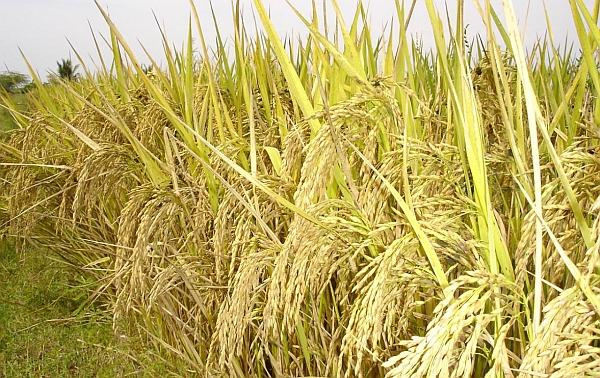 The breeding station of US Agriseeds through local subsidiary SeedWorks
The breeding station of US Agriseeds through local subsidiary SeedWorks 
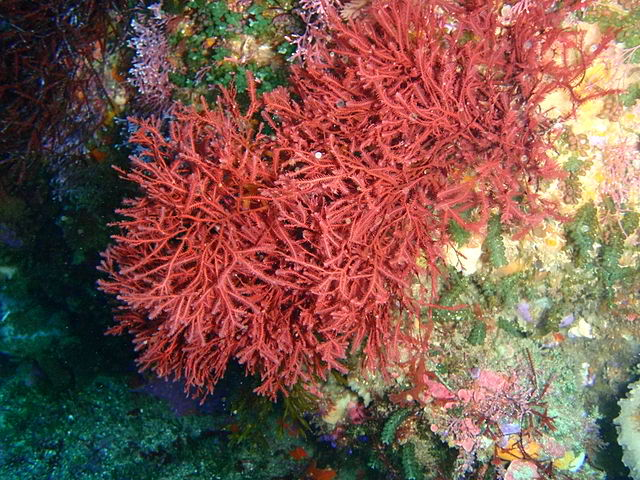 In a multi-location project, the trial conducted in Bulacan by the team led by Dr. Gil L. Magsino of the National Crop Protection Center - University of the Philippines-Los Banos (UPLB-NCPC), yielded the following results: On grain weight, application of 3 and 6 bags of chemical fertilizer per hectare (ha), combined with 200 ppm (or 20 mL/L) of CPGR yielded higher grain weight (450 g and 455 g/10 hills, respectively) than the farmers’ practice of applying 9 bags of chemical fertilizer/ha, which yielded only 275 g/10 hills.Productive tillers and panicle length (length of inflorescence) were also significantly higher in the test crops compared with those in the farmers’ field. Productive tillers are the rice stems that bear panicles (rice inflorescence) with fertilized grains, while longer rice panicle is associated with producing more rice grains.Carrageenan is an indigestible polysaccharide (carbohydrate) extracted from edible seaweeds. It is mainly used as thickener or stabilizer in the food industry or as a binding agent for domestic products such as toothpaste and shampoo, and in many biotechnology and pharmaceutical products. Results of studies conducted by the Philippine Nuclear Research Institute of the Department of Science and Technology (DOST-PNRI) showed that when polysaccharide is subjected to modified irradiation technology can be an effective growth promoter. At a very small dose, CPGR is an effective organic fertilizer. Researchers from UPLB-NCPC also found CPGR as inducer of resistance against rice’s major pests.CPGR offers an array of benefits, e.g., it makes the rice stem stronger thus, improves rice resistance to lodging; it is compatible with farmers’ practice on fertilizer application thus, giving higher grain yield potential; it promotes resistance to rice tungro virus and bacterial leaf blight. Moreover, it has no harmful effects on natural enemies or beneficial insects and arthropods and thus environment-friendly.This collaborative program implemented by the DOST-PNRI, Philippine Rice Research Institute (PhilRice), and UPLB-NCPC is being funded by the Philippine Council for Agriculture, Aquatic and Natural Resources Research and Development of the DOST (DOST-PCAARRD).ByMarita A. Carlos, DOST-PCAARRD S&T Media Service
In a multi-location project, the trial conducted in Bulacan by the team led by Dr. Gil L. Magsino of the National Crop Protection Center - University of the Philippines-Los Banos (UPLB-NCPC), yielded the following results: On grain weight, application of 3 and 6 bags of chemical fertilizer per hectare (ha), combined with 200 ppm (or 20 mL/L) of CPGR yielded higher grain weight (450 g and 455 g/10 hills, respectively) than the farmers’ practice of applying 9 bags of chemical fertilizer/ha, which yielded only 275 g/10 hills.Productive tillers and panicle length (length of inflorescence) were also significantly higher in the test crops compared with those in the farmers’ field. Productive tillers are the rice stems that bear panicles (rice inflorescence) with fertilized grains, while longer rice panicle is associated with producing more rice grains.Carrageenan is an indigestible polysaccharide (carbohydrate) extracted from edible seaweeds. It is mainly used as thickener or stabilizer in the food industry or as a binding agent for domestic products such as toothpaste and shampoo, and in many biotechnology and pharmaceutical products. Results of studies conducted by the Philippine Nuclear Research Institute of the Department of Science and Technology (DOST-PNRI) showed that when polysaccharide is subjected to modified irradiation technology can be an effective growth promoter. At a very small dose, CPGR is an effective organic fertilizer. Researchers from UPLB-NCPC also found CPGR as inducer of resistance against rice’s major pests.CPGR offers an array of benefits, e.g., it makes the rice stem stronger thus, improves rice resistance to lodging; it is compatible with farmers’ practice on fertilizer application thus, giving higher grain yield potential; it promotes resistance to rice tungro virus and bacterial leaf blight. Moreover, it has no harmful effects on natural enemies or beneficial insects and arthropods and thus environment-friendly.This collaborative program implemented by the DOST-PNRI, Philippine Rice Research Institute (PhilRice), and UPLB-NCPC is being funded by the Philippine Council for Agriculture, Aquatic and Natural Resources Research and Development of the DOST (DOST-PCAARRD).ByMarita A. Carlos, DOST-PCAARRD S&T Media Service
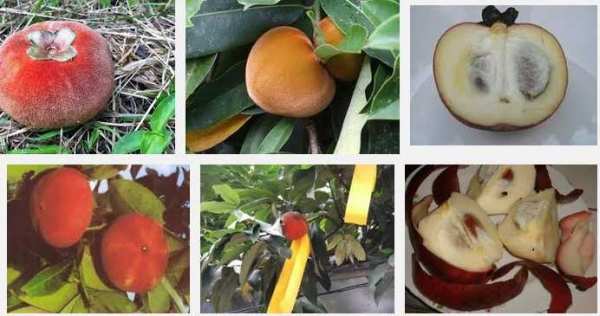 Thus, a call to patronize our own produce has been raised by Agriculture (Secretary Proceso J. Alcala, “We should encourage and lead by example, and urge our young people to love Pinoy fruits.” There’s nothing wrong with appreciating imported fruits as long as we do the same for our own. Start today, start with
Thus, a call to patronize our own produce has been raised by Agriculture (Secretary Proceso J. Alcala, “We should encourage and lead by example, and urge our young people to love Pinoy fruits.” There’s nothing wrong with appreciating imported fruits as long as we do the same for our own. Start today, start with 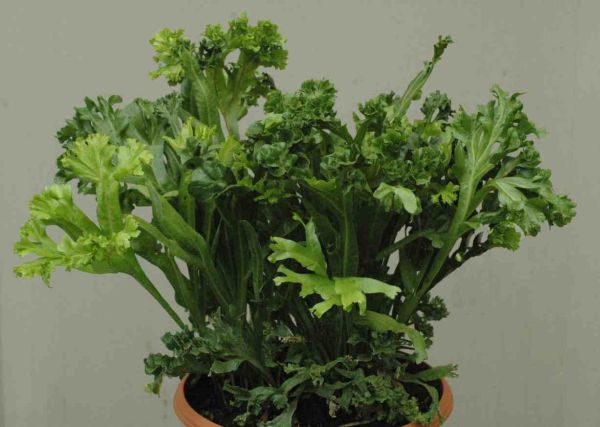

 Photo by
Photo by 
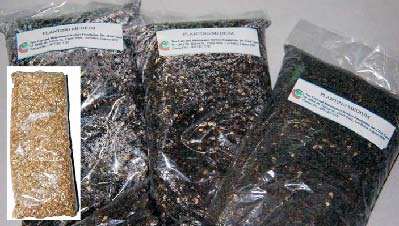

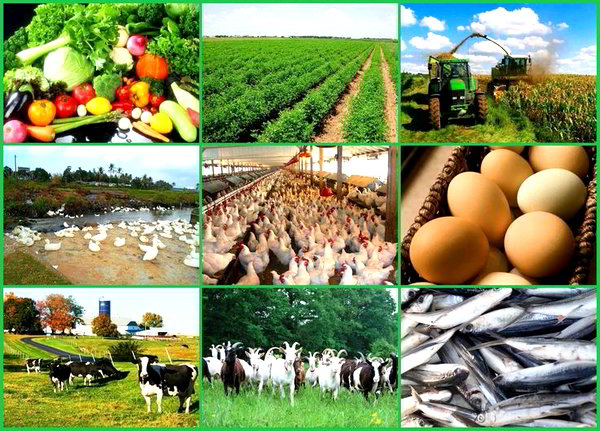 Agribusiness is one of the most profitable businesses in the world. There are many ways on how you can make money in agribusiness industry.
Agribusiness is one of the most profitable businesses in the world. There are many ways on how you can make money in agribusiness industry.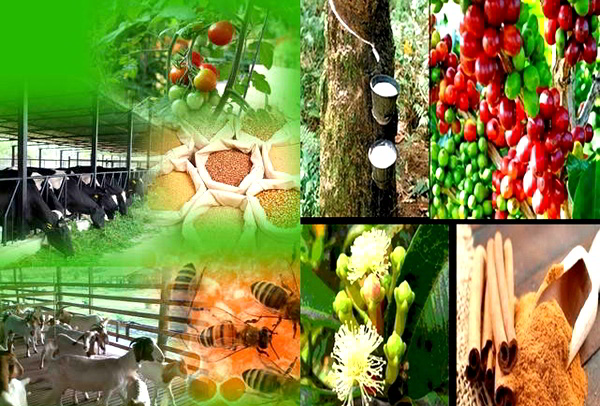 Before you decide on what agribusiness idea to venture, it is important to have a clear business plan that includes market demand for the products and how to get them to your target market.
Before you decide on what agribusiness idea to venture, it is important to have a clear business plan that includes market demand for the products and how to get them to your target market.
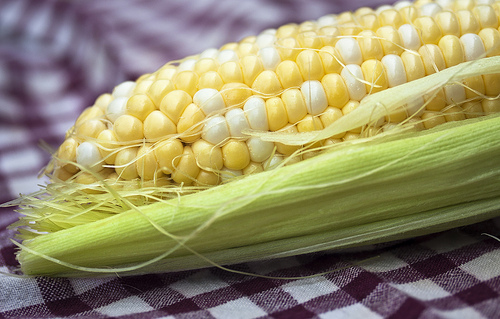 Photo by
Photo by 
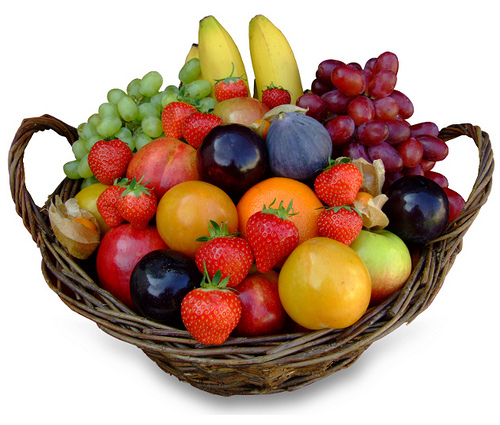 Photo by
Photo by 
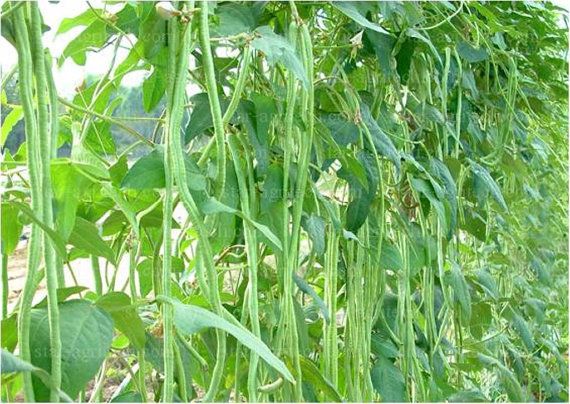 Thinking just how famous pole sitao or simply sitao is? It is the fifth mentioned vegetable in one of the most popular children’s songs in the Philippines, the “Bahay Kubo”. This climbing herbaceous plant is also an ingredient of the original yummy Ilocano dish, pinakbet or mixed veggies with bagoong and some meat chunks and cooked to perfection.
Pole sitao is a great source of fiber and a variety of nutrients such as protein, vitamin A, thiamin, riboflavin, iron, phosphorus, and potassium, and is a very good source for vitamin C, folate, magnesium, and manganese. In a 100g serving size of pole sitao there are 47 calories, 0 grams of total fat, 0 mg cholesterol, 4 mg sodium (0 percent daily value), 8 grams of total carbohydrates (2 percent daily value), and 3 grams of protein (5 percent daily value). There is also 17 percent DV vitamin A, 2 percent DV iron, 31 percent DV vitamin C, and 5 percent DV calcium. (Percent daily values are based on a 2000 calorie diet. Individual daily values may be higher or lower depending on individual calorie needs.)
The Bureau of Agricultural Research annually conducts the National Research Symposium (NRS) to promote the best products of agriculture and fisheries R&D and to give due recognition to outstanding researchers and scientists in agriculture and fisheries through the AFMA Research Paper Award. Through the NRS, BAR aims to identify and disseminate significant information on new technological breakthroughs that would improve the agriculture and fisheries R&D sector.
In 2012, the paper titled, “Development of Organic Varieties of Pole Sitao (Vigna unguiculata (L) Walp.subsp. sesquipedalis (L.) Verdc.)”, won the silver award in the 24th NRS. The study basically employs breeding, segregation and pedigree selection of pole sitao. An added factor which makes it more unique and remarkable is that the breeding work is geared for organic agriculture.
The study is led by Rodel G. Maghirang, Gloria S. Rodulfo, Fatima Amor M. Tenorio, and Maria Emblem O. Grulla from the Institute of Plant Breeding- University of the Philippines Los Baños (IPB-UPLB), and Milagros Cacal of the Palawan Agricultural Center of the Palawan Agricultural Experiment Station (PAES). It sought to address the problems of low vigor, vulnerability to pests and diseases which all lead to yield losses. Eventually, the group succeeded in producing pole sitao cultivars that outperformed the existing varieties.
Plant breeding is basically the art and science of changing the genetics of plants in order to produce desired characteristics; it is the deliberate manipulation of plant species in order to achieve desired genotypes and phenotypes for specific purposes (Sleper, 1995).
Meanwhile, FAO/WHO Codex Alimentarius Commission defined organic agriculture as “a holistic production management system which promotes and enhances agro-ecosystem health, including biodiversity, biological cycles, and soil biological activity. It emphasizes the use of management practices in preference to the use of off-farm inputs, taking into account that regional conditions require locally adapted systems. This is accomplished by using, where possible, agronomic, biological, and mechanical methods, as opposed to using synthetic materials, to fulfill any specific function within the system."
Those two terms guided the development of the new cultivars of pole sitao by the team of Dr. Maghirang. The main objective of the study is to select, breed and recommend pole sitao varieties that perform well under organic agriculture conditions. The specific objectives include the production of varieties that are suitable to this specific environment in comparison to the existing commercial variety and to evaluate and recommend the varieties for organic agriculture. The study was conducted in experimental stations and on-farm.
Under a DA-BAR funded project in 1999, the performance evaluation of pole sitao under organic conditions was initially done. In 2005 this was followed by hybridization and pedigree selection under organic conditions. Cultural management aspects such as minimal weeding and minimal pest control measures, and the use of composted manures and compost materials for soil health and fertilization were carried out for the organic agriculture environment. Further breeding, segregation and pedigree selection until F6 (6th filial generation) of pole sitao that will perform better under organic conditions than the recommended commercial variety were done. Ten F6 lines were assessed and compared to a commercial check variety (Sandigan) using established parameters for selection such as vigor, earliness, pod quality and acceptability, pest and disease resistance, storability, and yield under a two-season trial.
In summary, the results of the study show that breeding under organic conditions resulted to the selection of potential organic varieties of pole sitao. Among the entries, 10116-1-1-0-0, 0801-5-1-1-0, 10421-0-0 and 1096-1-1-0-0 outperformed the check variety, Sandigan, with total yields of 25.26t/ha, 25.19t/ha, 24.9t/ha, and 26.19t/ha for the first trial, respectively; and total yields of 15.31t/ha, 19.39t/ha, 17.6t/ha, and 18.07t/ha, respectively for the second trial. Additionally, these lines are moderately to highly resistant to pest and diseases, have good storability, and acceptable pod qualities. Under an initial on-farm trial in Palawan, the two preferred entries, 10421-0-0 and 1096-1-1-0-0, both had high yields and good pod qualities.
Yes, it is a malignant truth and it’s not new to our ears that some vegetable producers apply synthetic pesticides and fertilizers excessively with the worst case scenario being that the fruits and pods are dipped in a container containing a mixture of those chemicals to “improve their crops’ yield and growth performance” but sacrificing the health of unaware consumers in the process. However, with this development in organic pole sitao, we are one step closer to a healthier and safer choice. ###
----------
Thinking just how famous pole sitao or simply sitao is? It is the fifth mentioned vegetable in one of the most popular children’s songs in the Philippines, the “Bahay Kubo”. This climbing herbaceous plant is also an ingredient of the original yummy Ilocano dish, pinakbet or mixed veggies with bagoong and some meat chunks and cooked to perfection.
Pole sitao is a great source of fiber and a variety of nutrients such as protein, vitamin A, thiamin, riboflavin, iron, phosphorus, and potassium, and is a very good source for vitamin C, folate, magnesium, and manganese. In a 100g serving size of pole sitao there are 47 calories, 0 grams of total fat, 0 mg cholesterol, 4 mg sodium (0 percent daily value), 8 grams of total carbohydrates (2 percent daily value), and 3 grams of protein (5 percent daily value). There is also 17 percent DV vitamin A, 2 percent DV iron, 31 percent DV vitamin C, and 5 percent DV calcium. (Percent daily values are based on a 2000 calorie diet. Individual daily values may be higher or lower depending on individual calorie needs.)
The Bureau of Agricultural Research annually conducts the National Research Symposium (NRS) to promote the best products of agriculture and fisheries R&D and to give due recognition to outstanding researchers and scientists in agriculture and fisheries through the AFMA Research Paper Award. Through the NRS, BAR aims to identify and disseminate significant information on new technological breakthroughs that would improve the agriculture and fisheries R&D sector.
In 2012, the paper titled, “Development of Organic Varieties of Pole Sitao (Vigna unguiculata (L) Walp.subsp. sesquipedalis (L.) Verdc.)”, won the silver award in the 24th NRS. The study basically employs breeding, segregation and pedigree selection of pole sitao. An added factor which makes it more unique and remarkable is that the breeding work is geared for organic agriculture.
The study is led by Rodel G. Maghirang, Gloria S. Rodulfo, Fatima Amor M. Tenorio, and Maria Emblem O. Grulla from the Institute of Plant Breeding- University of the Philippines Los Baños (IPB-UPLB), and Milagros Cacal of the Palawan Agricultural Center of the Palawan Agricultural Experiment Station (PAES). It sought to address the problems of low vigor, vulnerability to pests and diseases which all lead to yield losses. Eventually, the group succeeded in producing pole sitao cultivars that outperformed the existing varieties.
Plant breeding is basically the art and science of changing the genetics of plants in order to produce desired characteristics; it is the deliberate manipulation of plant species in order to achieve desired genotypes and phenotypes for specific purposes (Sleper, 1995).
Meanwhile, FAO/WHO Codex Alimentarius Commission defined organic agriculture as “a holistic production management system which promotes and enhances agro-ecosystem health, including biodiversity, biological cycles, and soil biological activity. It emphasizes the use of management practices in preference to the use of off-farm inputs, taking into account that regional conditions require locally adapted systems. This is accomplished by using, where possible, agronomic, biological, and mechanical methods, as opposed to using synthetic materials, to fulfill any specific function within the system."
Those two terms guided the development of the new cultivars of pole sitao by the team of Dr. Maghirang. The main objective of the study is to select, breed and recommend pole sitao varieties that perform well under organic agriculture conditions. The specific objectives include the production of varieties that are suitable to this specific environment in comparison to the existing commercial variety and to evaluate and recommend the varieties for organic agriculture. The study was conducted in experimental stations and on-farm.
Under a DA-BAR funded project in 1999, the performance evaluation of pole sitao under organic conditions was initially done. In 2005 this was followed by hybridization and pedigree selection under organic conditions. Cultural management aspects such as minimal weeding and minimal pest control measures, and the use of composted manures and compost materials for soil health and fertilization were carried out for the organic agriculture environment. Further breeding, segregation and pedigree selection until F6 (6th filial generation) of pole sitao that will perform better under organic conditions than the recommended commercial variety were done. Ten F6 lines were assessed and compared to a commercial check variety (Sandigan) using established parameters for selection such as vigor, earliness, pod quality and acceptability, pest and disease resistance, storability, and yield under a two-season trial.
In summary, the results of the study show that breeding under organic conditions resulted to the selection of potential organic varieties of pole sitao. Among the entries, 10116-1-1-0-0, 0801-5-1-1-0, 10421-0-0 and 1096-1-1-0-0 outperformed the check variety, Sandigan, with total yields of 25.26t/ha, 25.19t/ha, 24.9t/ha, and 26.19t/ha for the first trial, respectively; and total yields of 15.31t/ha, 19.39t/ha, 17.6t/ha, and 18.07t/ha, respectively for the second trial. Additionally, these lines are moderately to highly resistant to pest and diseases, have good storability, and acceptable pod qualities. Under an initial on-farm trial in Palawan, the two preferred entries, 10421-0-0 and 1096-1-1-0-0, both had high yields and good pod qualities.
Yes, it is a malignant truth and it’s not new to our ears that some vegetable producers apply synthetic pesticides and fertilizers excessively with the worst case scenario being that the fruits and pods are dipped in a container containing a mixture of those chemicals to “improve their crops’ yield and growth performance” but sacrificing the health of unaware consumers in the process. However, with this development in organic pole sitao, we are one step closer to a healthier and safer choice. ###
----------
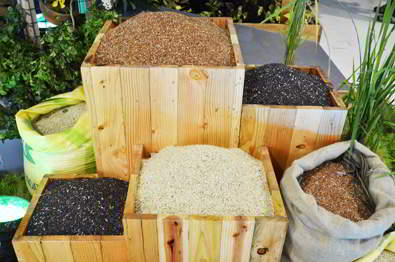

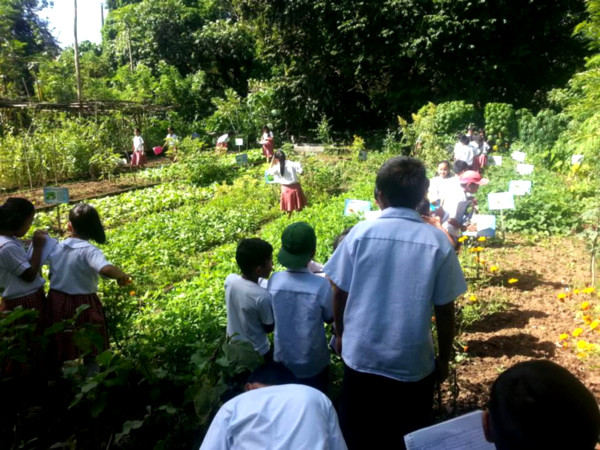
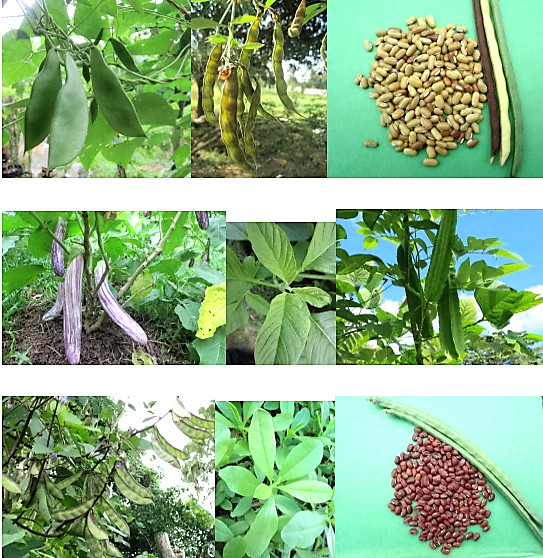
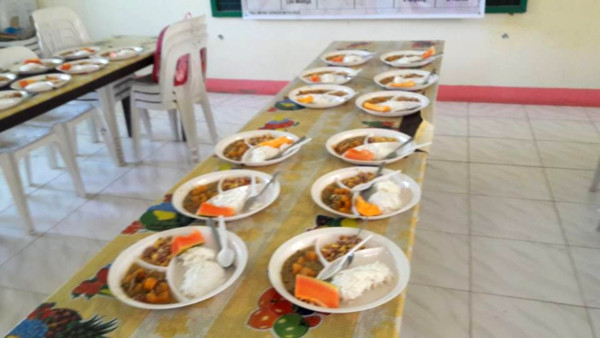



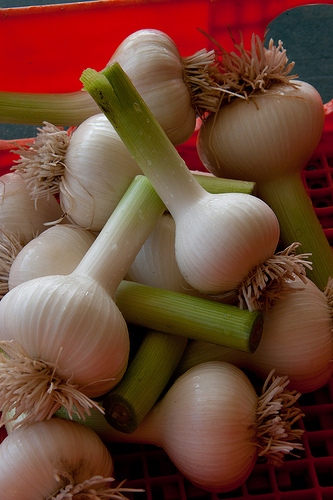 Photo by
Photo by 


 Mr. Fernando B. Aurigue, Project Leader from DOST-PNRI, lectures on the Carrageenan PGP Technology for Mungbean and Peanut to farmers in Ubay, Bohol.[/caption]
According to Fernando B. Aurigue, Project Leader from the DOST–Philippine Nuclear Research Institute (DOST-PNRI), results of the project’s second and final year of implementation indicate a significant increase in yield for mungbean and peanut when supplemented with the 3-month old Carrageenan PGP.
Carrageenan is an edible and natural polysaccharide extracted from seaweed. When irradiated, carrageenan further breaks down to oligo-saccharides that are proven as an effective inorganic fertilizer.
Carrageenan PGP has been registered with the Fertilizer and Pesticide Authority (FPA) as an inorganic fertilizer for rice. The project has already been approved of the Experimental Use Permit (EUP) for mungbean and peanut in regions 2, 3, 7 and 10. To maximize the use of carrageenan, part of the project’s targets is the Label Expansion (LE) of the FPA-registered carrageenan product as PGP for mungbean and peanut. The LE protocol for mungbean and soybean will be similar but a separate protocol for FPA registration will be developed for peanut.
Multi-location trials’ results showed that supplementing the Farmer’s Practice (FP) with Carrageenan PGP increases yield of different mungbean and peanut varieties. Field experiments in regions 2, 3, 7, and 10 showed that mungbean yield could increase to as much as 88.7% (from 710.45 kg/ha to 1,497.60 kg/ha) when Carrageenan PGP is supplemented to FP. Meanwhile, peanut yield increased from an average yield of 1,622.00 kg/ha to 2,000.00 kg/ha or 68.90%.
According to Dr. Lucille V. Abad, inventor of the carrageenan PGP and Director of the Atomic Research Division of DOST-PNRI, the institution is still looking for third-party industries that can mass produce the carrageenan PGP for commercial consumption. Currently, access to the carrageenan foliar spray can be requested from DOST-PNRI through the conduct of collaborative researches, field trials, and sharing of research results.
by Margarita V. Atienza, DOST-PCAARRD S&T Media Services
Mr. Fernando B. Aurigue, Project Leader from DOST-PNRI, lectures on the Carrageenan PGP Technology for Mungbean and Peanut to farmers in Ubay, Bohol.[/caption]
According to Fernando B. Aurigue, Project Leader from the DOST–Philippine Nuclear Research Institute (DOST-PNRI), results of the project’s second and final year of implementation indicate a significant increase in yield for mungbean and peanut when supplemented with the 3-month old Carrageenan PGP.
Carrageenan is an edible and natural polysaccharide extracted from seaweed. When irradiated, carrageenan further breaks down to oligo-saccharides that are proven as an effective inorganic fertilizer.
Carrageenan PGP has been registered with the Fertilizer and Pesticide Authority (FPA) as an inorganic fertilizer for rice. The project has already been approved of the Experimental Use Permit (EUP) for mungbean and peanut in regions 2, 3, 7 and 10. To maximize the use of carrageenan, part of the project’s targets is the Label Expansion (LE) of the FPA-registered carrageenan product as PGP for mungbean and peanut. The LE protocol for mungbean and soybean will be similar but a separate protocol for FPA registration will be developed for peanut.
Multi-location trials’ results showed that supplementing the Farmer’s Practice (FP) with Carrageenan PGP increases yield of different mungbean and peanut varieties. Field experiments in regions 2, 3, 7, and 10 showed that mungbean yield could increase to as much as 88.7% (from 710.45 kg/ha to 1,497.60 kg/ha) when Carrageenan PGP is supplemented to FP. Meanwhile, peanut yield increased from an average yield of 1,622.00 kg/ha to 2,000.00 kg/ha or 68.90%.
According to Dr. Lucille V. Abad, inventor of the carrageenan PGP and Director of the Atomic Research Division of DOST-PNRI, the institution is still looking for third-party industries that can mass produce the carrageenan PGP for commercial consumption. Currently, access to the carrageenan foliar spray can be requested from DOST-PNRI through the conduct of collaborative researches, field trials, and sharing of research results.
by Margarita V. Atienza, DOST-PCAARRD S&T Media Services

 Rubber seedlings in root trainers (Image credit: Forestry and Environment Research Division (FERD), PCAARRD)[/caption]
The root trainer technology enhances the development of straight tap root and many root hairs allowing the rubber plant to withstand environmental stress after planting, resulting in high survival rate and uniformity in growth.
Root trainers are specially designed plastic containers that have vertical ridges inside to promote fast and healthy growth of roots. This technique stimulates well-established root system by preventing tap root coiling. The size and shape of the containers also eases transporting and handling rubber seedlings.
Based from the project titled, “Innovation of Root Trainer Technique and Precision Grafting Technology for Rapid Propagation of Quality Planting Materials of Rubber,” quality planting materials of rubber were grown in just 5-6 months using the root trainer technology combined with young budding propagation technique, compared with the use of conventional polybag nursery practice that takes 10-18 months. Budding can also start as early as 20 days.
Root trainers were first discovered in India and new propagation techniques were adapted from Indonesia and China. With these in mind, project leader Ernie Camacho of the Department of Agriculture Regional Field Office 9 (DA-RFO 9) thought of a way to verify the applicability of root trainer in the country and test new and innovative techniques in the production of quality and affordable planting materials of rubber.
According to Camacho, the new technique will enable the Philippines to propagate climate-resilient rubber at lower cost. The root trainer technology is also projected to be profitable in the downstream market.
Falling under PCAARRD’s strategic R&D banner program, the developed technology is envisioned to be commercialized in the country to help resolve the prevailing issue of the high demand of rubber quality planting materials.
This project is funded by the Philippine Council for Agriculture, Aquatic, and Natural Resources Research and Development of the Department of Science and Technology (DOST-PCAARRD). It is one of the three finalists for the research category of the National Symposium on Agriculture, Aquatic and Natural Resources Research and Development (NSAARRD), spearheaded by PCAARRD.
NSAARRD awardees will be recognized during the PCAARRD’s Awards and Recognition Ceremony on June 19, 2019 at the Philippine International Convention Center (PICC), Pasay City.
by Eirene Grace C. Zaragoza, DOST-PCAARRD S&T Media Services
Rubber seedlings in root trainers (Image credit: Forestry and Environment Research Division (FERD), PCAARRD)[/caption]
The root trainer technology enhances the development of straight tap root and many root hairs allowing the rubber plant to withstand environmental stress after planting, resulting in high survival rate and uniformity in growth.
Root trainers are specially designed plastic containers that have vertical ridges inside to promote fast and healthy growth of roots. This technique stimulates well-established root system by preventing tap root coiling. The size and shape of the containers also eases transporting and handling rubber seedlings.
Based from the project titled, “Innovation of Root Trainer Technique and Precision Grafting Technology for Rapid Propagation of Quality Planting Materials of Rubber,” quality planting materials of rubber were grown in just 5-6 months using the root trainer technology combined with young budding propagation technique, compared with the use of conventional polybag nursery practice that takes 10-18 months. Budding can also start as early as 20 days.
Root trainers were first discovered in India and new propagation techniques were adapted from Indonesia and China. With these in mind, project leader Ernie Camacho of the Department of Agriculture Regional Field Office 9 (DA-RFO 9) thought of a way to verify the applicability of root trainer in the country and test new and innovative techniques in the production of quality and affordable planting materials of rubber.
According to Camacho, the new technique will enable the Philippines to propagate climate-resilient rubber at lower cost. The root trainer technology is also projected to be profitable in the downstream market.
Falling under PCAARRD’s strategic R&D banner program, the developed technology is envisioned to be commercialized in the country to help resolve the prevailing issue of the high demand of rubber quality planting materials.
This project is funded by the Philippine Council for Agriculture, Aquatic, and Natural Resources Research and Development of the Department of Science and Technology (DOST-PCAARRD). It is one of the three finalists for the research category of the National Symposium on Agriculture, Aquatic and Natural Resources Research and Development (NSAARRD), spearheaded by PCAARRD.
NSAARRD awardees will be recognized during the PCAARRD’s Awards and Recognition Ceremony on June 19, 2019 at the Philippine International Convention Center (PICC), Pasay City.
by Eirene Grace C. Zaragoza, DOST-PCAARRD S&T Media Services